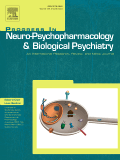“The cannabinoid (CB) system is widespread in the central nervous system and is crucial for controlling a range of neurophysiological processes such as pain, appetite, and cognition. The endogenous CB molecules, anandamide, and 2-arachidonoyl glycerol, interact with the G-protein coupled CB receptors, CB(1) and CB(2).
These receptors are also targets for the phytocannabinoids isolated from the cannabis plant and synthetic CB receptor ligands.
The CB system is emerging as a key regulator of neuronal cell fate and is capable of conferring neuroprotection by the direct engagement of prosurvival pathways and the control of neurogenesis.
Many neurological conditions feature a neurodegenerative component that is associated with excitotoxicity, oxidative stress, and neuroinflammation, and certain CB molecules have been demonstrated to inhibit these events to halt the progression of neurodegeneration.
Such properties are attractive in the development of new strategies to treat neurodegenerative conditions of diverse etiology, such as Alzheimer’s disease, multiple sclerosis, and cerebral ischemia.
This article will discuss the experimental and clinical evidence supporting a potential role for CB-based therapies in the treatment of certain neurological diseases that feature a neurodegenerative component.”
http://www.ncbi.nlm.nih.gov/pubmed/20875047








